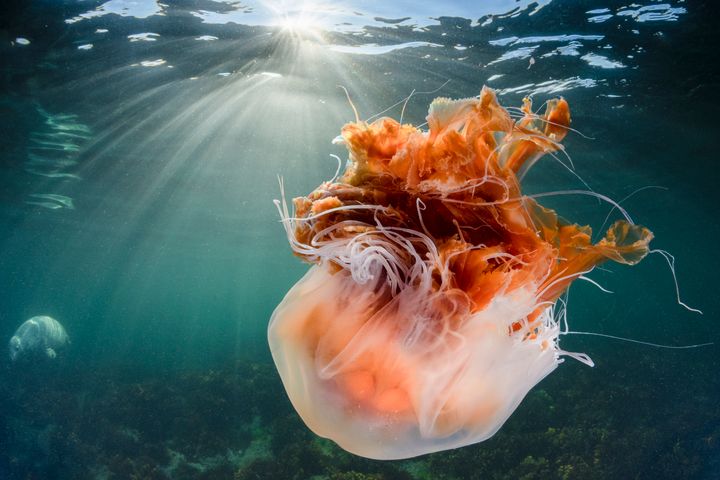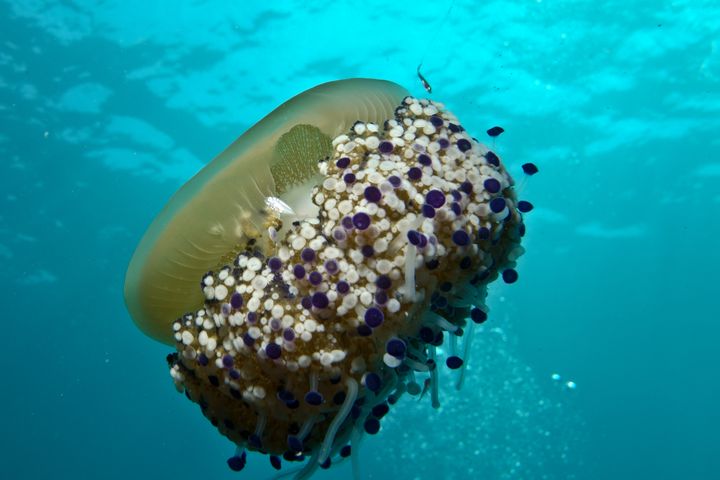
Today is World Jellyfish Day (yes, that’s a real thing) and to mark the occasion, The Marine Conservation Society (MCS) has released its annual Wildlife Sightings report.
The report, which covers the UK and Ireland, focuses on sightings of jellyfish and marine turtles as both of these animals are essential in supporting ocean biodiversity – it also indicates changes in our waters over time, such as warming waters.
In strange news, the report for this year, which covers the period of time between 1st October 2022 and 30th September 2023, says there has been a 32% increase in jellyfish sightings compared to the previous year.
While jellyfish sightings fluctuate every year, this past year has seen a massive 57% increase in sightings of ‘large blooms’.

The most frequently reported was the barrel jellyfish, which at 467 sightings accounted for 27% of all sightings — an increase of 21% compared to the previous year.
According to the MCS, this type of jellyfish is often called a ‘dustbin lid jellyfish’ due to the fact that they can grow up to a metre in size. Cool, cool, cool.
They have a solid, spherical, rubbery-looking bell which can be white, pale pink, blue or yellow. Rather than tentacles, barrel jellyfish have eight thick, frilled arms.
Dr Peter Richardson, Head of Ocean Recovery at the Marine Conservation Society, said: “Jellyfish populations are highly variable year on year, and depend on several environmental factors that are different each year, such as sea temperatures and storms.
“Numbers of sightings we receive can also depend on the awareness of our sightings programme and the ‘wow factor’ of jellyfish people encounter.
“This year seems to have been a particularly good year for barrel jellyfish – one of our chunkiest jellyfish species that can occur in mind-boggling numbers when conditions are favourable.”
Marine turtles also spotted in the UK and Ireland
The society also records reports of marine turtles, which feed on jellyfish. There were 12 sightings of these over the past year and four of those were leatherback turtles.
Leatherback turtles are most likely to be feasting on jellyfish during summer months and another kind of turtle called ‘loggerheads’ tend to eat them in winter months.
These are both considered to be of ‘vulnerable’ conservation status and reported sightings of these animals helps the society to track their movements and threats to the creatures – meaning policies and strategies can then be created to further protect them.
People urged to share sightings of jellyfish and turtles
Justine Millard, Head of Volunteering and Citizen Science at the Marine Conservation Society, said: “The data on jellyfish and turtles that volunteers submit plays a vital role in understanding the changes occurring in our marine ecosystems, and help us to protect our seas.”
He went on to emphasise the importance of these reports to the society: “We urge anyone who has spotted a jellyfish or turtle to report it to us to continue to build a picture of our seas and the incredible life within them.”